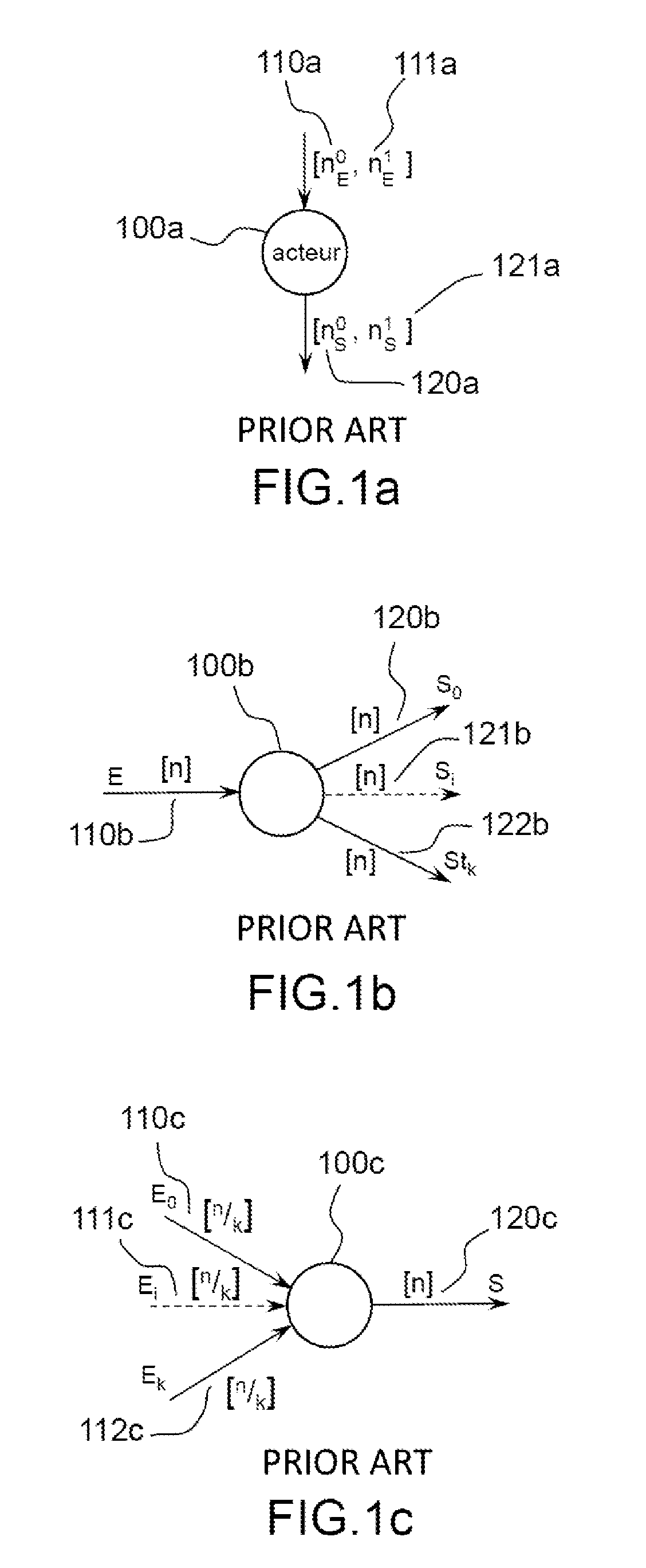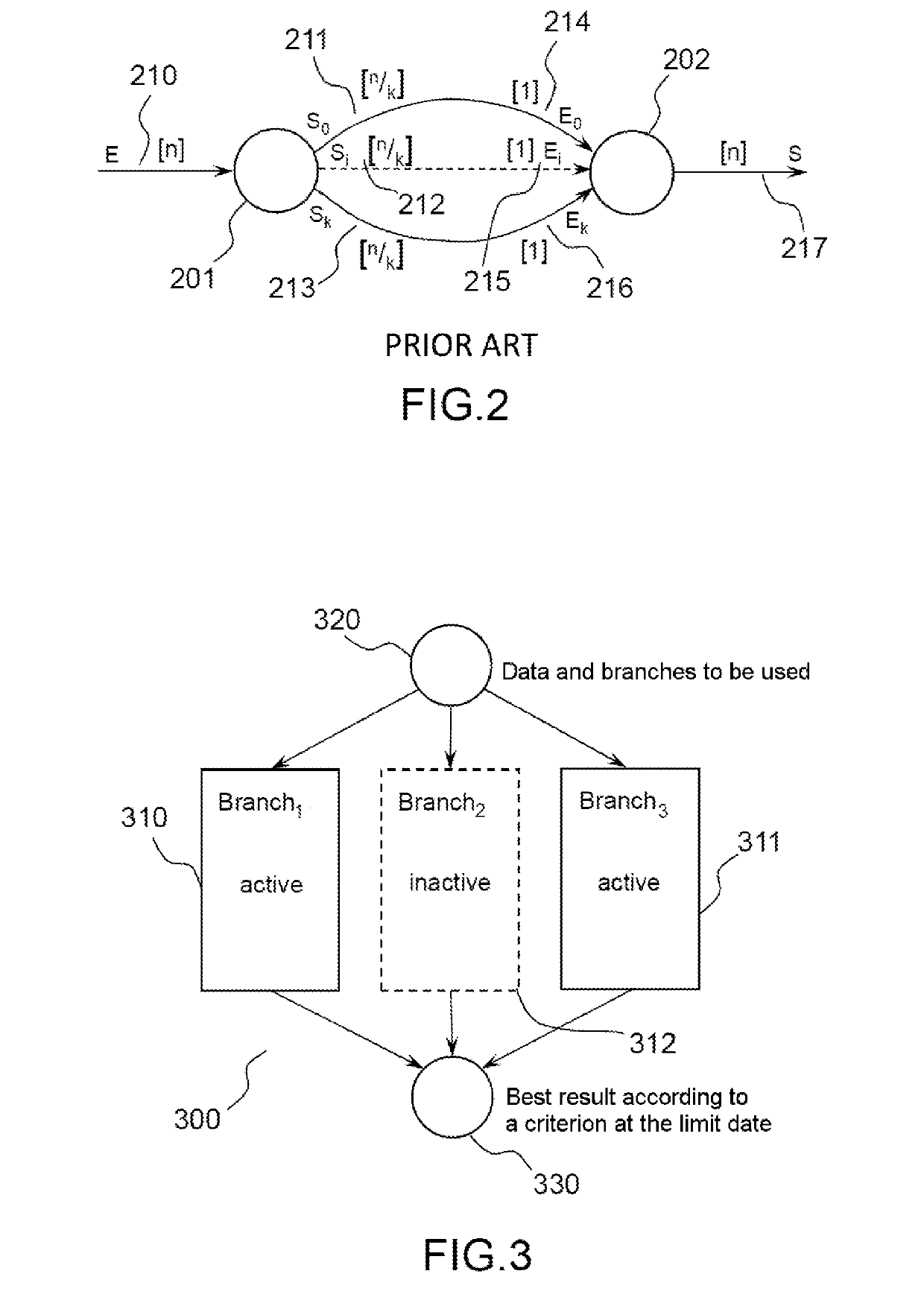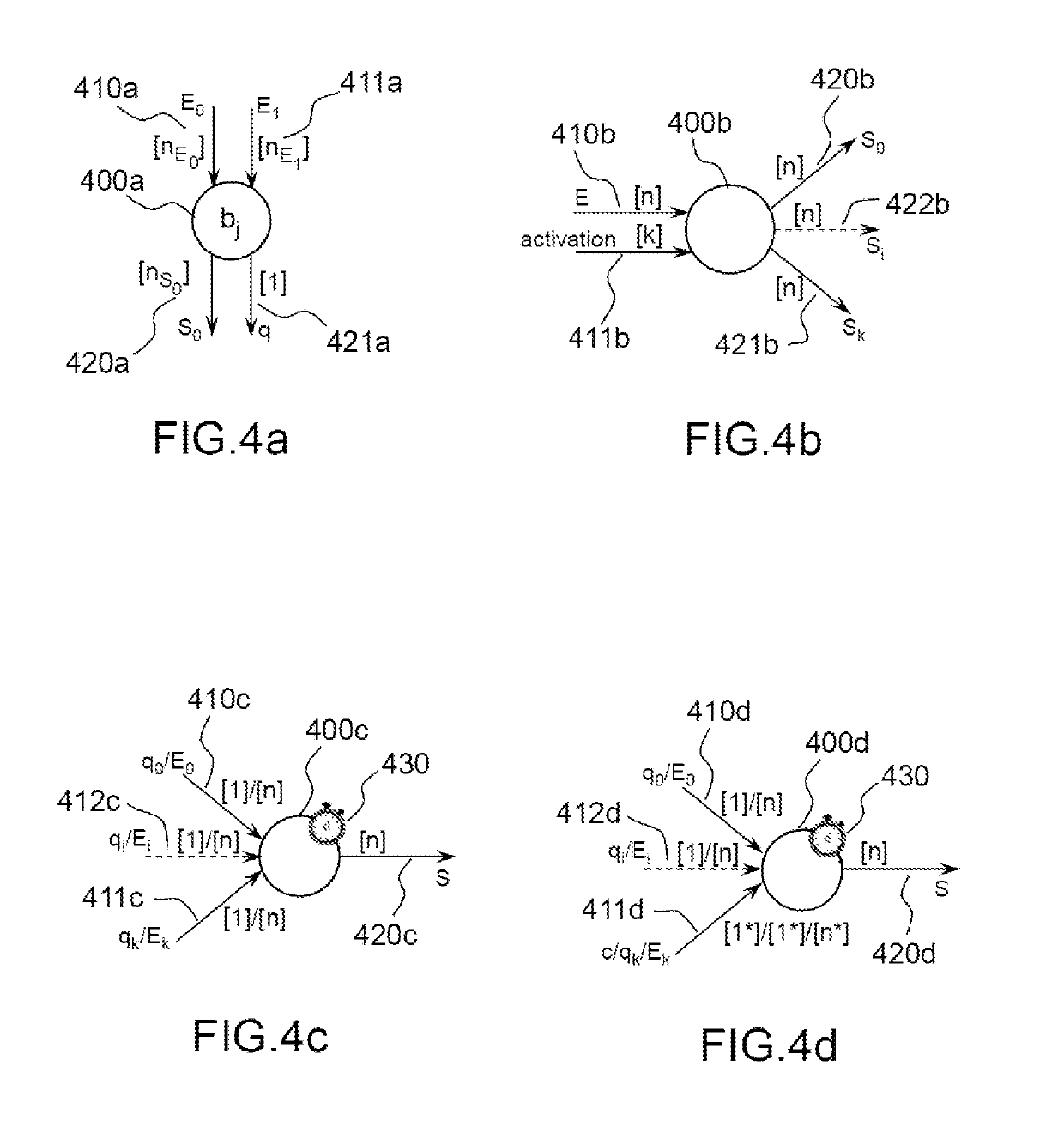Speculative and iterative execution of delayed data flow graphs
a data flow graph and iterative execution technology, applied in the direction of program synchronisation, program code transformation, program initiation/switching, etc., can solve the problem of reducing the affecting the execution efficiency of the execution process, and increasing the number of computation cores. problem, to achieve the effect of maximizing the flexibility of the best result selection rule and maximizing the utilization ra
- Summary
- Abstract
- Description
- Claims
- Application Information
AI Technical Summary
Benefits of technology
Problems solved by technology
Method used
Image
Examples
Embodiment Construction
[0050]Hereinafter in the description, the implementation of the invention is illustrated by examples relating to the execution of data flow graphs of CSDF type. It should however be noted that the invention is not restricted to graphs of CSDF type. The invention is in particular applicable to the types of graphs for which it is possible to determine the latency of each branch offline, for example on compilation; for which it is possible to demonstrate the absence of deadlocks and which can be executed in bounded memory. The invention is thus applicable, for example, to the graphs of “Core Functional Dataflow” type.
[0051]Some acronyms commonly used in the technical field of the present application may be employed in the description and the figures. These acronyms are listed in the table below, with their full expression and their meaning.
[0052]
AcronymExpressionMeaningADASAdvanced DriverA driving aid computation system, forAssistance Systemexample with automatic signpostidentification...
PUM
 Login to View More
Login to View More Abstract
Description
Claims
Application Information
 Login to View More
Login to View More - R&D
- Intellectual Property
- Life Sciences
- Materials
- Tech Scout
- Unparalleled Data Quality
- Higher Quality Content
- 60% Fewer Hallucinations
Browse by: Latest US Patents, China's latest patents, Technical Efficacy Thesaurus, Application Domain, Technology Topic, Popular Technical Reports.
© 2025 PatSnap. All rights reserved.Legal|Privacy policy|Modern Slavery Act Transparency Statement|Sitemap|About US| Contact US: help@patsnap.com



